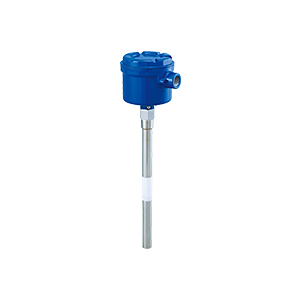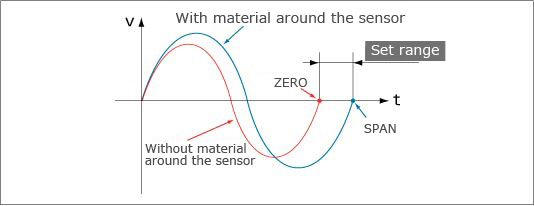Main application
Virtually any liquids, solids and bulk solids

Main feature
Easy programming by push buttons
Multifunctional with microcomputer
First level switch to have status indicating LCD
Improved buildup prevention performance
Extremely reliable
Principle of Operation
The basic oscillator circuit is of the parallel resonance circuit with L (coil) and C (capacitance between the electrodes).
The oscillation frequency (f) of this circuit is : f = 1/2 π √LC.
The frequency without material around the sensor (f1) is: f1 = 1/2 π √LC, where C is the capacitance without material around the sensor (zero point).
With material around the sensor, the capacitance increases (C+ΔC), and the frequency (f2) is: f2 = 1/2 π √L(C+ΔC), where C+ΔC is the capacitance with material around the sensor (span point).
The sensor detects the frequency change from f1 to f2, and actuates the relay. The frequency range is divided into 8 segments (between zero and span), and the set and reset points assigned on a desired segment, which means high limit, low limit and hysteresis can be programmed.

Set range is divided into 8 segments, and ON/OFF points are set for the segments. Hysteresis is also programmable.

